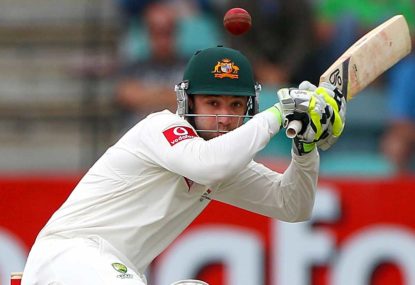WATCH: Glenn Maxwell's amusing reaction to first-ball wicket with 'very tame' half-tracker
RCB were initially questioned after bringing Maxi on with the new rock. It worked a treat as he dismissed Ruturaj Gaikwad first ball.

NSW coroner Michael Barnes has released his findings regarding the death of Australian cricketer Phillip Hughes, stating that Hughes’ death was not the result of malicious intent and that he would not have survived the incident even if wearing modern protection.
Hughes was struck in the neck by a delivery during a Sheffield Shield match on 25 November 2014. He passed away while in an induced coma two days later.
“A minuscule misjudgment or a slight error of execution caused him to miss the ball which crashed into his neck with fatal consequences… There was no suggestion the ball was bowled with malicious intent. Neither the bowler nor anyone else was to blame for the tragic outcome,” said Barnes.
The finding brings to an end a traumatic inquest that revolved around concerns over opposition players sledging Hughes before his death, and the decision to target him with short balls.
Barnes said that given how common sledging is in cricket, it was difficult to believe the repeated denials from players called as witnesses during the inquest that no sledging occurred during the match.hugh
NSW cricketer Doug Bollinger was accused of sledging Hughes by saying “I’m going to kill you” during the match, though he denied that he had done so.
Barnes said he hoped the cricketers would reconsider the decision to sledge opponents in the future, out of concern that it provides an ‘ugly underside’ to the ‘beautiful game’ of cricket.
Sean Abbott did bowl nine consecutive short balls to Hughes but Barnes said there was nothing to suggest that any of them was delivered with malicious intent.
Included in Barnes’ findings were a number of recommendations made to prevent any similar incidents occurring in the future.
Key goals here included reviewing the rules regarding dangerous and unfair bowling, creating a neck protector that could be worn in all first-class cricket matches, and improving the ability of umpires and other staff to deliver medical assistance.